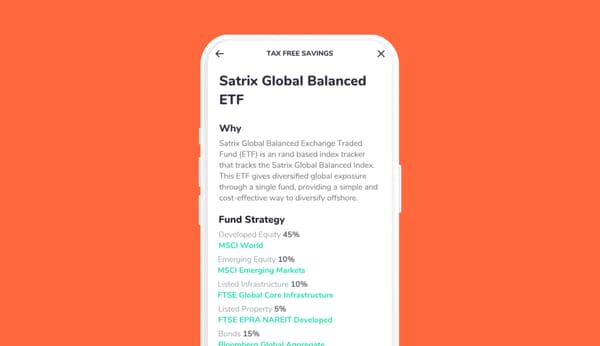For first-time investors, you may not be sure what investment strategy or plan to follow. No one has a crystal ball which helps us predict what will happen in the markets, so how do we know when the “right” time is to invest?
One of the simplest and most proven investment strategies for beginners and long-term investors is “Rand Cost Averaging” (RCA). The world of finance and investing is filled with a lot of jargon, and it can feel like the world of 3-letter acronyms. While RCA may seem like another complex concept, it’s pretty straightforward and effective in helping you build long-term wealth through your investments. Let’s unpack exactly what RCA is, and how you can practically implement this strategy, no matter what you’re investing – even a few hundred Rand a month.
What is Rand Cost Averaging?
Rand cost averaging is an investment strategy where you invest a smaller, fixed amount at regular intervals (usually monthly) regardless of what the market might be doing at the time. This isn’t about keeping tabs on company performance and monitoring graphs – unlike grabbing your crystal ball and trying to time the market, rand cost averaging takes a regular and long-term approach to make the most of the ups and downs of the market.
The great thing about rand cost averaging is that it reduces the impact of short-term market volatility (the ups and downs of the market) on your overall investment. When markets are down, you stick to your investment strategy and continue to buy more units or shares, and benefit from lower prices. That means you gain when the market eventually recovers. But that isn’t you trying to time the market – you’re just sticking to your dedicated monthly deposit, no matter what.
How does Rand Cost Averaging actually work?
Let's break down how rand cost averaging works using an example:
Investor A
Investor A starts the new year off with her new year’s resolution in full swing in January 2022. She invests a lump sum amount of R12,000 into the SATRIX Top40 ETF through the Franc app. She doesn’t make any further contributions for the rest of 2022.
On the day of her investment, the ETF is trading at a price of R67.43. Her R12,000 buys 178 shares. Fast forward to the end of December 2022: her investment is now worth R12,215. She made a small gain.
Investor B
Investor B also starts the year on a high note and decides to implement rand cost averaging by investing a fixed monthly amount of R1,000 by setting up a recurring deposit on the Franc app. Investor B also invests into the SATRIX Top 40 ETF. Investor B stays committed to her R1,000 a month – regardless of market movements during the year – and also ends up investing R12,000 for the year, the same as investor A.
Investor B’s journey looks different because she is buying shares at a different price every month. As the price drops, she now buys more shares for the same R1,000. By the end of December 2022, Investor B had 186 shares, a few more than Investor A, even though her contributions for the year were identical. Investor B’s investment is worth R12,779 by the end of the year – a larger return than Investor A.
The difference might seem small over a 12-month period, but we know that investing is a long-term game. This small gain is compounded over time, and over a 10+ year period, the gain becomes a lot more significant.
*Assume full amount was used to buy ETF units
*No fees/transaction costs are taken into account
Why is Rand Cost Averaging an effective strategy?
You get to mitigate risk. Investment returns do not come in a straight line. While you might have a 12% annualized return in your investment over a 10-year period, there can be years where your investment might be down 4% in a given year. Rand cost averaging helps mitigate the risk in trying to time the market. Instead of making large investments during uncertain times, you spread your investment across different market conditions.
It helps you build a good investing habit. By committing to invest a fixed amount at regular intervals, you establish a disciplined investing habit that can lead to long-term financial success.
You tap into the power of doing nothing. When you invest consistently, you reduce the temptation to make emotional decisions based on short-term market movements.
It accumulates wealth over the long term. Over time, rand cost averaging can harness the power of compound interest, potentially resulting in substantial wealth accumulation.
How you can use Rand Cost Averaging when investing
Set up a recurring deposit on the Franc app, or a stop order on your banking app, either on a weekly or monthly basis. This means that you will be investing consistency through market cycles and movement and taking advantage of opportunities when prices drop.
Rand cost averaging can be a powerful strategy when implemented consistently over a long time. Always remember to think long term: while gains might seem small in the beginning, don't underestimate the power of compounding in your investing journey. Investing can be daunting, but there are some great resources out there to help you make sense of it all. Check out the Franc Academy and follow @_thewealthcoach_ on Instagram for more actionable resources to help you along the way.







![How & Why You Should Do a Financial Reset [+ downloadable financial reset journal]](/blog/content/images/size/w600/2024/12/Setting-goals-for-the-year.png)


